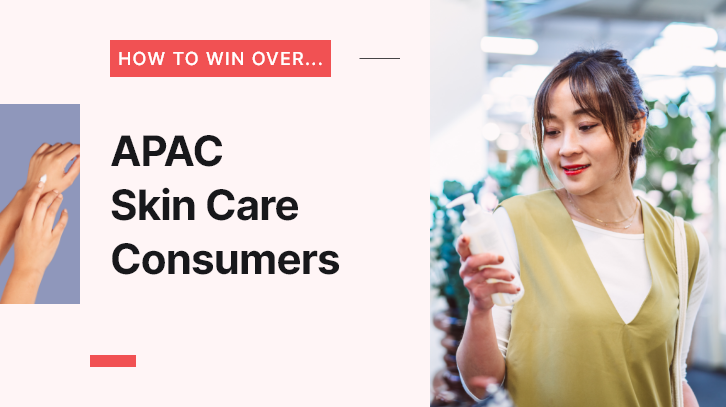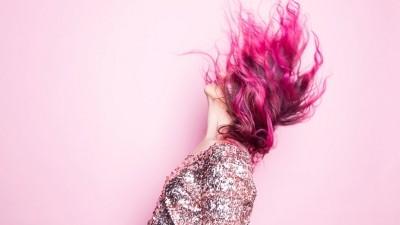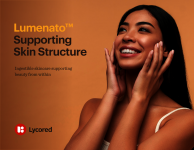How to win over… Asia’s sophisticated skin care consumers

The buzz in the skin care market is deafening, with a cacophony of new launches, viral products, and emerging trends trying to grab attention. The beauty market overall is competitive, but the skin care market is doubly cutthroat. We have seen some great brands succumb to the pressures of the market while rather average brands continue to thrive.
“I think it’s as competitive as it has ever been,” Lauren Lee, founder of K-beauty retailer StyleStory. Since its launch in 2014, Lee has founded K-beauty brand Jelly Ko and a regulatory consultancy.
“I don’t think there have ever been as many brands or as many launches. It’s very, very competitive and you feel that in all of the different ways. To cut through the noise with a new product launch these days is hard. Even makeup brands have moved into the skin care market to check out the possibilities.”
And the possibilities in this multi-billion-dollar market seem endless. According to Euromonitor International, the Asian skin care market grew by 4.2% to U$66.95bn in 2023. Hair care and colour cosmetics follow at U$26.79bn and U$21.33bn respectively. Despite market volatility, the category experienced only a slight dip of 1.1% in 2022, the only decline in four years.
Today, skin care has mostly exceeded pre-pandemic levels in Asia. Since 2019, skin care has grown by 44.9% in India and almost 39.5% in Vietnam. The only two markets that declined since 2019 were Hong Kong and Japan by 17.5% and 3.93% respectively.
Skin care without borders
Lee summed up today’s skin care market with one word: borderless. Elaborating, she said that brands no longer have a defined customer base as consumers are happy to use any sort of product as long as it works for them.
“Back in the day, brands used to have an age group that they tried to appeal to and that’s disappeared. For Jelly Ko, because the branding and packaging are so cute and playful, people may think it’s a brand for teenagers, but we have customers in their 70s.”
The barriers are also coming down in terms of countries as consumers are now shopping internationally.
“There aren’t any borders anymore and that’s a big thing. It used to be a big thing for a US customer to purchase skin care overseas, but you don’t see the barrier or roadblock of trustworthiness – that’s all disappeared,” said Lee.
In a previous instalment of this series exploring the luxury beauty market, it was emphasised that consumers now understand that you do not necessarily need to pay a premium for good skin care products.
“Consumers are much more discerning. They may buy something from a luxury brand and others from the drugstore. Even someone who has a lot of money might buy a few products from The Ordinary,” said Allie Rooke, CEO of Clean Beauty Asia, an agency that helps brands enter and navigate the Asian market.
Nicolas Hieronimus, chief executive of L'Oréal shared similar sentiments about the Chinese beauty consumer in April.
“Chinese consumers are sophisticated. More and more, they are very demanding of the product quality. So once again, it's a game of innovation, of bringing them the best product and when I look at my brand portfolio and which brands are doing great, it's not based on price; it's based on innovation.”
The consumer attitude is similar in Japan, as seen in the latest @cosme Best Cosmetics Award, one of the most recognised beauty awards in Asia. According to its report, the increasing financial and economic concerns of Japanese consumer are pushing them towards ‘mid-priced’ skin care products.
Out of the top 10 products, four were from mid-priced brands, including the grand prize winner, Attenir. The brand, owned by the Fancl Corporation, dominated with its Skin Clear Cleansing Oil (JPY1,980).
“We understand that many customers prefer to keep their basic skin care routine affordable while occasionally incorporating high-end serums for targeted treatments,” said Yoshihisa Hosaka, president and chief executive of Attenir.
“With the rising cost of raw materials, many high-end brands are increasing their prices, which may lead to even tougher market conditions for these high-priced brands. As a result, mid-priced brands are likely to be reevaluated, potentially leading to increased competition within this segment.”
Fei Xu, market intelligence director, Asia Cosme Lab, highlighted the role that local brands have played in this.
“In China, there are also consumers that go for the premium or masstige brands. The local brands are increasingly playing a really important role in this. They have been very innovative in offer quality products at a more affordable price compared to international brands.”
However, he noted that skin care consumers are still willing to pay top dollar for skin care as long as it works.
“People are willing to pay a high price to get good quality products, especially for the prestige crowd because they believe that the price means the quality behind it. Research, efficacy is connected to the price for them,” said Xu.
Tomorrow’s skin care consumers
As evidenced by tweens buzzing about their skin routines on TikTok, tomorrow’s skin care consumers have already arrived.
“I have 13-year-olds hitting me up in the DMs (direct messaging) wanting to know what’s good for their skin. I know at 13, skin care was the last thing on my mind,” Lee said.
In a previous instalment of this series exploring the derma beauty market, it was highlighted that people beginning to understand the importance of skin as a vital organ. The increased education and awareness of skin care has expanded to a wider demographic, including younger consumers.
“In China, the young generation invests a lot in beauty. They start very young, even using luxury cosmetic products like La Mer and La Prairie. And because they start so young with luxury skin care, I think they won’t go down to the mass market as long as they see results,” said Xu.
Brands like Laniege have observed a growing need for pre-ageing products among Gen Z consumers and have developed new products like its Bouncy and Firm Sleeping Mask to cater to their concerns.
“We’re seeing more young people caring a lot about their skin, even from a young age like 20. They start to think about skin ageing and how to prevent it. We’re seeing them buy more products as well,” said Laneige Singapore marketing manager Kay Chan.
This is manifesting as the ‘slow ageing’ trend, Chan told us.
“Slow ageing means slowing down the process of ageing and preventing fine lines and wrinkles from showing too soon. Some young people might not even see the need for pre-ageing products yet, so we call it a slow-ageing step to maintain youthful and bouncy skin. You don’t even need to change out your routine, you can continue to use your hydration products and just add this on top.”
The interest in skin care among the youth has been a hot-button topic in recent months, as concerns have been growing regarding the unsuitable use of some skin care products by tweens and teens. Earlier this year, a California bill proposed the ban of anti-ageing skin care products to children under 13. It failed to advance but highlighted how much attention the issue has gotten.
While it is arguably difficult to control the choices these young people are making, especially with the influence of social media, Lee emphasised that brands need to show up and be more responsible.
“It's one thing to have people of a certain age attracted to the product. But I think some brands are falling foul of that line by actively targeting those kinds of customers with their products. If it falls into the anti-ageing category, you're doing the wrong thing by younger users.”
She added that in the long run, this would only damage the brand’s reputation. Increasingly, brands cannot afford to bury their heads in the sand about such matters. Generation Z consumers opinionated and will be vocal when a brand does not measure up to their standards.
While previous generations cared about what a brand represents, the younger generation is particularly invested in its values and actions. They are savvy to marketing tactics, making them more distrustful of brands. Therefore, brands must work harder to demonstrate their values through actions to earn and retain their trust.
“We used to have top-down conversations centred around the products, the efficiency, and best sellers. But I think now, people need to relate to what they purchase. Brands need to stand for something, and preserve or protect something that people will believe in. Consumers want their brands to be responsible, they want their brands to walk the talk. This will only get stronger with the younger generation,” Nathaëlle Davoust, global general manager, Melvita, L’Occitane Groupe.
Return of the ‘heroes’
The younger generation of consumers are particularly drawn to products that are both efficacious and trendy.
“What they are looking for are ingredients that deliver performance. At the same time, they are very trend-driven and take inspiration coming from the fashion world, for instance,” said Micaela Perlada, APAC regional marketing manager, Givaudan.
She elaborated this has contributed to the the resurgence of ‘hero’ ingredients. “We’re seeing a lot of nostalgia-inspired trends, for instance, Y2K. What was cool in the 2000s is making a comeback. In skin care, this moves us back to the epoch of the hero with the classic concepts of hero ingredients like retinol or hyaluronic acid.”
“The goal of all beauty consumers, especially for skin care is efficacy. And efficacious products have potent active ingredients. That’s why all the classic hero ingredients are still very popular. Hyaluronic acid, peptides, ceramides these are what they understand to be the best on the market.,” said Xu.
Skin care brand Elizabeth Arden, best known for products such as its Advanced Ceramide Capsules and Eight Hour cream, recently announced a Retinol + HPR Ceramide Capsules Rapid Skin Renewing Serum. As its name suggests, the product combines two powerhouse ingredients, ceramide and retinol. The new product is also accompanied by a water cream with the same ingredients.
The launches have been well-received by beauty consumers, which the brand attributes to its upgraded formula that features an “all-time favourite” ingredient, retinol.
“Interest in classic ‘hero’ ingredients like retinol still exists, but customers are increasingly looking at the point of differentiation and efficacy amongst the brands offering the same hero ingredients,” said Yumie Chia, general manager of Elizabeth Arden Asia Pacific Travel Retail.
Elizabeth Ardens’s new skin-renewing serum includes retinol + HPR, a next-generation retinoid, which the brand claims is ten times more potent than pure retinol, “delivering double the power and double the care”.
“It allows skin to benefit hugely from Retinoid without the typical sensitivity one might experience from pure retinol. This allows more customers, even those who were originally sensitive to pure retinol, to be able to try our new formulas and benefit from the use of the new level of retinol+HPR,” said Chia.
Another significant factor is the growing popularity of medical aesthetic treatments.
“There’s a new generation of hero ingredients on the rise that are inspired by the medical aesthetic treatments. In China, the new king of ingredients now is recombinant collagen,” said Xu.
Xu expects to see this ingredient more in the cosmetics realm as it offers enhanced safety, efficacy, and ethical appeal for consumers. German ingredients firm Evonik debuted its biotech-based, vegan, skin-identical and sustainable at this year’s in-cosmetics Global in Paris.
Last year, China’s Trautec, a market leader in synthetic recombinant human collagen (SRHC) completed a RMB 200m (U$27 million) Series B fundraise led by L Catterton, which has previously invested in beauty companies such as ELEMIS, ETVOS, Intercos, SUGAR Cosmetics and more.
“The SRHC industry has been growing rapidly on the back of consumers' increasing preferences for beauty and healthcare products with functional benefits, as well as rising acceptance of synthetic proteins. Thanks to improving technologies, the production of SRHC is also more scalable and eco‑friendly compared to the harvesting of collagen from animals and plants,” said the firm in the press statement.
It believes that the market for SRHC products will continue expanding at an annual rate of 34% in China and 30% globally over the coming years to reach U$11bn and U$186bn respectively by 2028.
High-performing naturals
The advancement of science has also aided the natural and organic beauty space, which has long been considered less sophisticated.
“Natural and organic used to have a reputation for being less efficient. But now that’s not the case. In our labs, we have seen the same, if not better efficacy precisely because we are purely going to the heart of the cell. We have natural versions of retinol and hyaluronic acid for example. Now we can clearly show that,” said Davoust.
Founded in the early 1980s, Melvita is considered a pioneer in the natural and organic space and earned an Ecocert certification in 2002.
“Melvita was the first brand to come to market with raw oils. It was at a time when serums were very sophisticated. We were the pioneers and now oils have become a huge trend. When you sell raw oils, it has to be very pure and absolutely clean. Now, people want to know where it comes from which is great news for us because we check all the boxes in that aspect,” said Davoust.
Davoust strongly believes that recent beauty trends are highly favourable for brands like Melvita, which are able to provide natural alternatives that can perform as well as their synthetic counterparts.
“It’s our time to win after years of being behind. The clients aren’t easily fooled. You must prove that you can do the same as the molecules they've heard of for years, without any of the risk without any of the damage or harm in terms of, you know, overcharging the skin. It's a great advantage,” she said.
The natural space is also witnessing the revival of its own hero ingredients, such as argan oil or rose water. Today, Melvita’s bestseller in Asia is its Argan Oil & Rose Hip Oil Roll-On. The multifunctional oil has become hugely popular in China as an eye serum and trickled down to other markets in Asia such as Malaysia.
“It is a beautiful blend of two oils and really nicely scented and not too heavy. It is perfectly matching the customer needs. I think we are one of the top three eye serums on [Little Red Book]. We are planning on selling half a million pieces this year. It’s becoming a huge seller because of the trend of not overloading the skin and giving it just what it needs,” said Davoust.
According to Davoust, the demand for oils in China has surprised the company.
“To be honest, the trend for oils in China has been much bigger than what we thought. We always thought it would end soon but it’s going on and we are very happy to ride on it. In fact, it’s intensifying for both the face and the body.”
To find out more about the top skin care trends in Asia, check out the video below:
Power-packed products
In the last couple of years, we have seen skin care brand packing their formulations to the brim with benefits. Australia’s Ultra Violette relaunched Queen Screen SPF50+ Luminising Skinscreen with a host of ingredients.
“We have made the formula more robust with pink algae extract. We also have Pentavitin for 72 hours of hydration and Kakadu plum for vitamin C. It also has vitamin B5, vitamin F and Vitamin E,” said Clare Slater, senior global marketing manager, Ultra Violette.
More recently, Amorepacific dropped three sun care launches from three brands – Laniege, Innisfree, and IOPE. These powered-up formulation were imbued with each brand’s existing best-selling serums, such as Laneige’s Perfect Renew 3X Signature Serum and Innisfree’s Green Tea Seed Hyaluronic Acid Serum.
Such launches aim to tap into the beauty consumer’s increased desire for simplicity without compromising efficacy. Elizabeth Arden has also tapped into this trend with the launch of the new Eight Hour HydraPlay Skin Perfecting Daily Moisturiser. The product claims to restore the skin’s moisture barrier, refine pores, control excess oil, blur visible imperfections and create an even canvas for makeup.
“It serves the need for simplicity and fuss-free skin care… It is a moisturiser with multi-benefits, a huge appeal to minimalists who prefer to have just one step to solve multiple skin concerns. It is a great target product for the Millennials and Gen Zs,” said Chia.
With the development of more powerful products, we could see consumers trim down their beauty routines and embrace a more minimalist regime. After all, it also sits in line with the value of sustainability. However, Xu argues that this may not be the case.
While he agrees that products are moving towards multi-benefit formulas, he believes most consumers in Asia will continue with a rather lengthy routine.
“Cleansing is already two steps with double cleansing so there will be at least six to seven steps. And of course, there are also beauty devices, the best partner for your skin care to boost the penetration and amplify the effects. Maybe they will want shortcuts for a morning routine, but in general, we see that consumers will stick to their long routines.”
Looking at my own routine, I have to admit he has a point. While we may aspire to have simple Kondo-esque vanity, we cannot ignore that there is enjoyment in the ritual of skin care as well as the exploration of new products. After all, skin care is a very personal choice.
“I think they will stick to a longer, sophisticated routine because there’s a belief in Asia of doing things step by step with good gestures, ensuring that each step is applied correctly and ensuring good absorption into the skin layer by layer,” said Xu.
As we look ahead, the Asian skin care market's trajectory is clear: innovation, efficacy, and consumer education will remain paramount. Brands must navigate an increasingly borderless market with discerning consumers who value transparency and performance.
Furthermore, the rise of younger, well-informed customers underscores the need for adaptable strategies that cater to a wide demographic while maintaining ethical standards. As the beauty landscape evolves, those who prioritise quality, sustainability, and authentic engagement with their audience will stand out in this competitive arena.



![Marinova highlights the cosmetic potential of fucoidan’s anti-inflammatory and wound-healing properties in addressing chronic skin conditions. [Getty Images]](/var/wrbm_gb_food_pharma/storage/images/_aliases/wrbm_medium/publications/cosmetics/cosmeticsdesign-asia.com/headlines/business-financial/marinova-eyes-opportunities-in-wound-healing-and-inflammation/17515969-1-eng-GB/Marinova-eyes-opportunities-in-wound-healing-and-inflammation.jpg)

![Franz Skincare has developed patches that claim to offer broad-spectrum sun protection to address the challenge of sunscreen reapplication. [Franz Skincare]](/var/wrbm_gb_food_pharma/storage/images/_aliases/wrbm_medium/publications/cosmetics/cosmeticsdesign-asia.com/headlines/brand-innovation/k-beauty-sunscreen-patch-aims-to-solve-consumer-reapplication-challenges/17505190-1-eng-GB/K-beauty-sunscreen-patch-aims-to-solve-consumer-reapplication-challenges.jpg)
![Paula’s Choice launches Beautypedia platform on SEA websites. [Paula's Choice]](/var/wrbm_gb_food_pharma/storage/images/_aliases/wrbm_medium/publications/cosmetics/cosmeticsdesign-asia.com/article/2024/06/24/paula-s-choice-launches-beautypedia-sea-for-ingredient-conscious-consumers/17500876-1-eng-GB/Paula-s-Choice-launches-Beautypedia-SEA-for-ingredient-conscious-consumers.jpg)





![Totem Eco aims to tap into the growing trend of conscious consumerism as it embarks on its international expansion. [Totem Eco]](/var/wrbm_gb_food_pharma/storage/images/_aliases/wrbm_tiny/publications/cosmetics/cosmeticsdesign-asia.com/headlines/business-financial/totem-eco-eyes-opportunity-in-conscious-consumerism-targets-sea-in-expansion-plans/17515861-1-eng-GB/Totem-Eco-eyes-opportunity-in-conscious-consumerism-targets-SEA-in-expansion-plans.jpg)
![LUXASIA opens new opportunities for luxury niche beauty brands in Vietnam with the launch of escentials. [LUXASIA]](/var/wrbm_gb_food_pharma/storage/images/_aliases/wrbm_tiny/publications/cosmetics/cosmeticsdesign-asia.com/article/2024/07/03/can-luxury-niche-beauty-brands-crack-brick-and-mortar-retail-vietnam/17531983-1-eng-GB/Can-luxury-niche-beauty-brands-crack-brick-and-mortar-retail-Vietnam.jpg)



![Oo La Lab launches first Singapore flagship and a new artisanal collection celebrating the human relationship with our sense of smell. [Oo La Lab]](/var/wrbm_gb_food_pharma/storage/images/_aliases/wrbm_tiny/publications/cosmetics/cosmeticsdesign-asia.com/headlines/brand-innovation/oo-la-lab-aims-to-build-singapore-flagship-into-fragrance-destination/17455347-3-eng-GB/Oo-La-Lab-aims-to-build-Singapore-flagship-into-fragrance-destination.jpg)
![Our round-up of the recent trend developments in the APAC beauty market [Watsons]](/var/wrbm_gb_food_pharma/storage/images/_aliases/wrbm_tiny/publications/cosmetics/cosmeticsdesign-asia.com/headlines/market-trends/what-s-trending-top-stories-on-apac-beauty-market-and-consumer-insights5/17535415-1-eng-GB/What-s-trending-Top-stories-on-APAC-beauty-market-and-consumer-insights.jpg)



